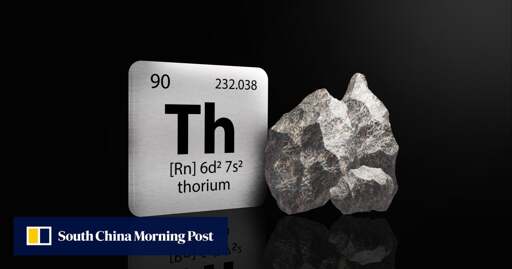It marks the first long-term, stable operation of the technology, putting China at the forefront of a global race to harness thorium – considered a safer and more abundant alternative to uranium – for nuclear power.
The experimental reactor, located in the Gobi Desert in China’s west, uses molten salt as the fuel carrier and coolant, and thorium – a radioactive element abundant in the Earth’s crust – as the fuel source. The reactor is reportedly designed to sustainably generate 2 megawatts of thermal power.



That is assuming they don’t make significant amounts of Fe-60 (2.6 My half-life) by exposing steel pipes to neutron flux. While the fuel itself might have a shorter half-life, other waste still needs to be dealt with.